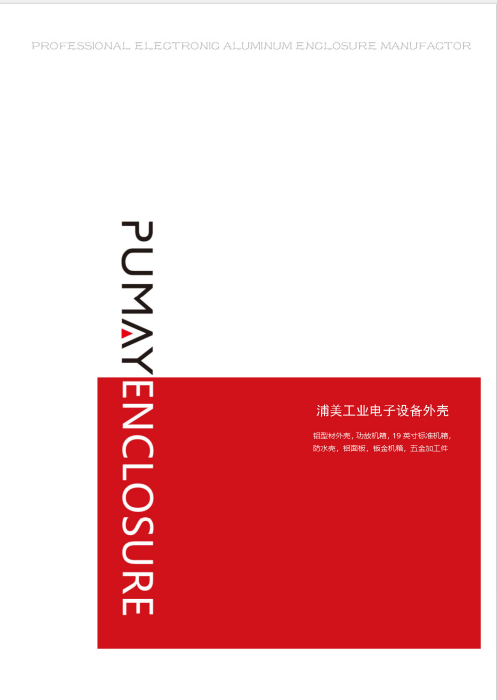In custom enclosure manufacturing, MOQ (Minimum Order Quantity)1 is a crucial factor that affects production cost, lead time, and customer satisfaction2. While higher MOQs reduce per-unit costs, they can also deter potential clients who prefer small-volume production. Balancing MOQ with cost efficiency and flexibility is key to optimizing your business strategy.
Here’s how to optimize MOQ3 for custom enclosures while maintaining profitability and meeting diverse customer demands.
Why MOQ Matters in Custom Enclosure Manufacturing
MOQ represents the minimum number of units a manufacturer requires to produce a custom product at an acceptable cost level. It is determined by factors such as material procurement4, tooling setup, production efficiency5, and logistics6.
Key Considerations:
-
Economies of Scale: Higher quantities reduce per-unit costs.
-
Setup and Tooling Costs: Custom designs often require new molds or CNC programming, which increases the cost for small batches.
-
Material Waste: Small runs can result in material inefficiencies.
-
Storage and Logistics: Higher quantities may increase inventory and storage costs.
-
- -
5 Strategies to Optimize MOQ for Custom Enclosures
1. Modular and Standardized Design
Modular enclosures7 allow manufacturers to use common components across multiple designs, reducing tooling and setup costs.
Solution:
- Use standardized base models with customizable panels or features.
- Design enclosures to accommodate multiple industries or applications (e.g., electronics, medical devices, telecommunications).
- Example: Create a core aluminum chassis and offer multiple front panel configurations for different clients.
Benefit: Reduces MOQ by sharing production resources across different products.
2. Batch Production Scheduling8
Combine multiple small-volume orders into a single production batch to reduce costs.
Solution:
- Group orders with similar material requirements or production processes.
- Implement rolling production schedules that align multiple customer orders within a specific time frame.
- Use a make-to-order strategy for highly customized parts while maintaining stock for standard components.
Benefit: Lowers production cost per unit and enables more flexible MOQs.
3. Flexible Manufacturing Techniques
Invest in flexible manufacturing systems that can handle small-batch production efficiently.
Technologies to Consider:
- CNC Machining: Ideal for short runs with minimal tooling costs.
- 3D Printing: For rapid prototyping and low-volume production of complex components.
- Laser Cutting: Reduces lead time for custom panels or logos.
Benefit: Reduces setup costs, enabling you to offer lower MOQs without sacrificing profitability.
4. Negotiate with Suppliers
Material procurement often drives MOQ limits. Building strong relationships with suppliers can help you negotiate more favorable terms.
Solution:
- Work with suppliers that specialize in small-batch material sourcing.
- Consolidate purchases of common materials (e.g., aluminum sheets, fasteners) to gain volume discounts.
- Explore alternative materials with shorter lead times and lower order quantity requirements.
Benefit: Reduces raw material costs and increases flexibility in MOQ.
5. Offer Tiered Pricing Models
Introduce a tiered pricing strategy to balance customer demand with production efficiency.
Example of Pricing Tiers:
| Quantity | Unit Price | Total Cost |
|---|---|---|
| 50 units | $100 | $5,000 |
| 100 units | $75 | $7,500 |
| 500 units | $50 | $25,000 |
Solution:
- Provide price incentives for larger orders while keeping small-batch production available at a higher cost.
- Highlight cost benefits for clients when they increase their order quantity.
Benefit: Encourages customers to order larger quantities while maintaining flexibility.
The End
Optimizing MOQ for custom enclosures requires a balance between cost efficiency and flexibility. By adopting modular design, batch production, and flexible manufacturing, manufacturers can lower MOQs without sacrificing profitability. These strategies not only attract small and mid-sized clients but also improve scalability and operational efficiency in the long run.
-
Understanding MOQ is essential for manufacturers to balance costs and customer needs effectively. ↩
-
This resource will provide insights into the interconnectedness of these factors in manufacturing success. ↩
-
Exploring optimization strategies can help manufacturers enhance profitability while satisfying diverse customer demands. ↩
-
Understanding material procurement is crucial for optimizing costs and efficiency in custom enclosure manufacturing. ↩
-
Exploring production efficiency can reveal strategies to lower costs and improve output in custom manufacturing processes. ↩
-
Logistics is vital for timely delivery and cost management in manufacturing; learning more can enhance your operational strategies. ↩
-
Explore how modular enclosures can enhance efficiency and reduce costs in production. ↩
-
Learn about the advantages of batch production scheduling for cost reduction and efficiency. ↩



